West German coins price guide (1948-2001)
Total added coins: 2071
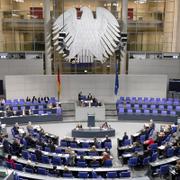
Prices of coins FRG



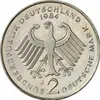












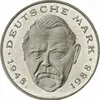


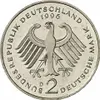
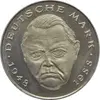




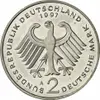
















Coins of the Federal Republic of Germany till 2001
Historical review
The Federal Republic of Germany (FRG) was founded in 1949 after the end of the World War II and with the beginning of the national-socialist rule. It was a federal state and was initially composed of 11 federate states.
The economy in the Federal Republic of Germany quickly recovered while its neighbor, the German Democratic Republic (GDR), had to face difficult challenges caused by high reparations. In contrast to the GDR that implemented a planned socialist economy, the Federal Republic of Germany was focused on a free-market economy with little government interference. The economic upturn in the FRG was largely due to financial support provided under the US Marshall Plan. Unemployment fell steadily and the population’s prosperity increased. In the early 1960s, full employment was reached.
In 1955, the Federal Republic of Germany joined NATO and in 1957 it became a founding member of the European Economic Community (EEC), the European Union’s predecessor.
In 1961, the GDR constructed the Berlin Wall that tightly closed the rest of the border with the Federal Republic of Germany. This contributed to an increase of tensions in Cold War. Steps towards rapprochement with Eastern Bloc countries were made only in the early 1970s. As a result, the first diplomatic negotiations were held between the FRG and GDR, and tensions slightly decreased.
In the mid-1980s, Soviet leader Mikhail Gorbachev launched perestroika («restructuring») and glasnost («openness») which influenced the entire Eastern Bloc. More and more people opposed to the regime in the GDR. The GDR authorities rejected reforms but had to make concessions. In the end, the Berlin Wall peacefully fell in 1989. The majority of the GDR population was in favor of reunification with the Federal Republic of Germany and introduction of the German mark (Deutsche mark or D-mark).
The German reunification took place on October 3, 1990. The initial euphoria soon gave place to disillusionment because the transformation of 40 years of planned economy into a free-market economy and the clarification of complicated property issues proved troublesome. Differences in social and economic aspects still exist between the two parts of Germany.
On January 1, 1999, the euro was adopted in the Federal Republic of Germany in non-physical form, and the first euro coins were issued on January 1, 2002.
Coins of the Federal Republic of Germany
In 1948, the Western Allies carried out a currency reform to turn the reichsmark into German mark (Deutsche Mark, DM). Each person received a «bounty» of 40 DM and a month later an additional one amounting to 20 DM.
In 1948, the Bank of German States (predecessor of the German Federal Bank) started issuing coins with the nominal of 1 pfennig. In 1949, 1-, 2-, 5-, 10- and 50-pfennigs coins were added. Coins issued in 1948 and 1949 had a legend «BANK DEUTSCHER LÄNDER», i.e., «Bank of German States». From 1950, the legend was changed to «BUNDESREPUBLIK DEUTSCHLAND», i.e., «FEDERAL REPUBLIC OF GERMANY». That same year, the 1 DM coin was issued and 2 and 5 DM were added in 1952.
The mintmarks had the following letters:
- D = München
- F = Stuttgart
- G = Karlsruhe
- J = Hamburg
After the reunification, the fifth mint was added to them:
- А = Berlin
Generally, coins were made of various materials, incl. iron/copper cover (1 and 2 pfennigs), copper (2 pfennigs), iron/tombac cover (5 and 10 pfennigs), copper/nickel (50 pfennigs, 1, 2 and 5 marks), .625 silver (5 and 10 marks), .925 silver (10 marks) and .999 gold (1 mark).
Starting from 1952, the FRG issued a large quantity of 5 and 10 DM commemorative coins made of .625 silver. From 1979, 5 DM commemorative coins were made of copper/nickel alloy. 10 DM commemorative coins were issued from 1970 to 1997 and were made of .625 silver, from 1998 — of .925 silver.
As a rule, commemorative coins issued in the Federal Republic of Germany till 2001 did not experienced any significant increase in value due to high mintage, except for the first four items minted from 1952 to 1957 (National Museum, Schiller, Markgraf von Baden and Eichendorff). Nevertheless, or perhaps precisely due to this, they are popular among collectors because they are affordable.
Sometimes, sets of coins from early circulations are priced very high, especially those having proof cover. Valuable coins are: 50 pfennigs, 1950, G, issued by the Bank of German States; 5 marks, J, 1958; and 2 pfennigs, 1967, G and J on steel planchets coated with copper. The 50-pfennigs coin, G, issued by the Bank of German States in 1950 is a mistake because by 1950 this bank did not exist anymore. By the time the error was discovered, 30,000 copies had already been minted.
In 2001, to wave good-bye to the German mark, the Federal Republic of Germany issued a 1-mark coin which was made of pure gold (999.9/1000) by five different mints. This was a symbolic gesture of appreciation to the German mark. On January 1, 2002, euro coins were introduced.
Heinrich Hegen

